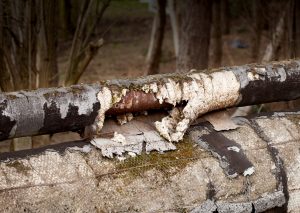 Staten Island has a long history of habitation, and there are buildings here that stretch back centuries. The Billiou-Stillwell-Perine House, for example, was built in 1662!
Staten Island has a long history of habitation, and there are buildings here that stretch back centuries. The Billiou-Stillwell-Perine House, for example, was built in 1662!
You probably don’t live in a pre-Colonial house, but you may live in a house with a long history—and perhaps plumbing that’s a bit, uhm, historical as well. And not in the “history that must be preserved” kind of way. Unless you think your house can be registered as a National Historical Landmark, we strongly recommend you update its “vintage” water piping.
What kinds of piping material are outdated?
Up until the 1970s and even into the 1980s, the most common kind of metal for plumbing was galvanized steel, which is steel dipped into a zinc solution to help protect it from corrosion. Galvanized steel is tough and durable, but it is prone to corrosion over time, and the zinc solution can place lead into the water along with the hazards of corrosion.
Even older homes (pre-World War II) may have cast iron pipes or clay for the sewer line. Both materials degrade easily and are long out of date. None of them are used anymore in residential or commercial construction.
How can I tell I have these materials?
First, if your home was built pre-1970 and has never had any upgrades to its plumbing pipes (repiping), then it almost certainly contains some amount of galvanized steel. If you aren’t certain, look for any exposed pipes around the house. A dull gray metal is galvanized steel. If you mark it with a penny and see only gray underneath, it’s also galvanized steel.
How much repiping do I need?
This depends on the age of your plumbing and the extent of the older pipe material. Newer homes may only need to have steel pipes located and replaced, leaving the other materials in place. The older the house, the more likely that it will require a whole-house repiping. But getting this job done is essential for a healthy house and household.
What materials replace steel, iron, etc.?
The metal used the most in modern plumbing is copper. Copper is corrosion-resistant, affected by only a small range of types of corrosion. It is lightweight and easy to work with, less prone to breaking under pressure, and less expensive. Main plumbing lines in homes are usually made from copper. Plumbers deploy a number of different plastic pipes, such as PEX and CPVC. Plastic pipes have a high tolerance to temperature changes, don’t corrode, won’t place toxic materials into the water, and some are flexible and easy to fit into almost any location.
How do I get started with the necessary repiping?
That’s the easy part: you call for our Woodbridge, NJ plumbers to come to your house to examine its plumbing system and find out what work needs to be done. The plumbers will tell you their recommended amount of repiping and arrange for the work. They’ll make sure it goes fast and smoothly so there is minimal disruption to your home life and routine.








